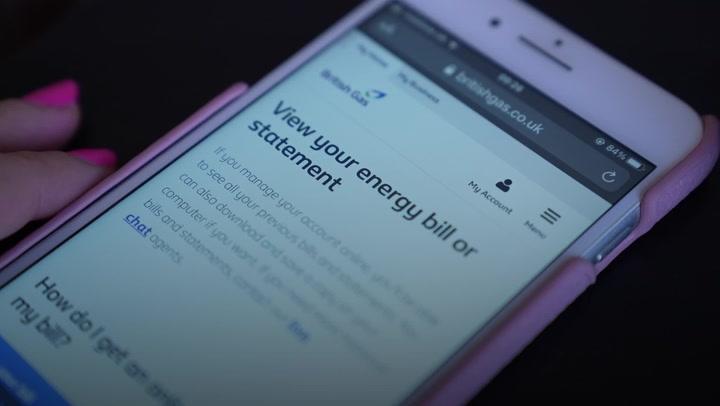With energy bills set to rise in the next few months, households across the country are faced with even more financial difficulties.
Especially vulnerable people and those on low incomes have voiced their worries about the eye-watering increase of 54 per cent.
From April, the average energy bill will soar to £1,971 per year and might even go up further in October.
For more money-saving advice click here
Many people are therefore looking for ways to decrease their living costs without making too many compromises.
Laundry expert and CEO of Laundryheap, Deyan Dimitrov, has shared some useful tips on how to save money when doing your laundry, the Daily Record reports.
He says there are seven hacks you can use that will not only keep your clothes in mint condition but also allow you to use your washing machine and tumble dryer at their most efficient levels.
Here are seven ways to save money and energy on your laundry wash:
Depending on your tariff, you could save some money by sticking to certain times instead of using your washing machine or tumble dryer during peak hours.
Increased demand between 4pm and 7pm could see your energy bills rise unnecessarily. Instead, try to do your laundry between 10pm and 5am, which is when energy prices are at their lowest.
If you need to dry your clothes during the day, the timing of your tumble drying cycles can also help save you money.
The UK is in an energy crisis following the price of gas which has rocketed in recent weeks.
Many energy suppliers are out of business which has prompted warnings of food shortages in UK supermarkets.
Householders are being warned that anyone coming off cheap, fixed energy deals could be in for a huge price hike, even on the cheapest tariffs. To avoid a potential price hike in energy bills customers can:
Here are some of Ofgem's suggested comparison sites:
You can also try Look After My Bills and Confused.com.
Switching loads while the dryer is still warm from its previous cycle can conserve the remaining heat inside the dryer for your next load of clothes. This can help shorten drying time, as the machine won’t need to work as hard to dry your clothes.
Using cooler programmes can dramatically decrease your energy use.
Hot washes can still be reserved for bedding, towels and sportswear in order to get rid of bacteria, but for the rest of your clothes, a 30 degree cycle will suffice.
For even further savings, use the eco setting on your washing machine, if it has one.

Similarly, when you use your tumble dryer, try to use a cooler cycle. While it may mean longer drying times, your overall energy consumption will be much lower. If your clothes come out warm to the touch, they've been in for too long.
One of the more obvious hacks is trying to make sure you fill your washing machine with a suitable load.
A good way to check is by trying to touch the top of the basin. If you can’t, the machine is overpacked and won't wash your clothes as thoroughly.
The same applies to your tumble dryer. An overpacked dryer will take longer to dry your clothes.
Also, make sure to untangle your laundry before putting it in the washing machine or dryer, as smaller items could become stuck or wrapped up in larger items, (such as duvet covers or pillow cases) which can prevent them from getting properly washed or dried.
Regularly cleaning your washing machine will ensure it stays in top condition.
Generally, it is advised to clean it every three months. Pour two cups of white vinegar into your machine’s detergent drawer, and run your machine on its hottest cycle.
After the first run, add half a cup of baking soda directly into the basin and run a hot cycle again.
Limescale removing products are also a good alternative as this can help get rid of any build-up that could affect the performance of your machine.
For your dryer, remember to regularly clean the lint filter, ideally after each cycle.
A lot of lint and hair can accumulate from just one load, which can hinder your machine from properly drying big and dense items.
As mentioned before, cooler cycles are more cost efficient and the best products to use for these are bio capsules or bio laundry detergent.
They contain enzymes that can be activated at lower temperatures than non-bio products and will be better at breaking down dirt and stains during a colder wash.
There are also detergents specifically for cold water washes but it’s worth noting that non-bio detergents are better for sensitive skin, as they contain less harsh enzymes.
Can't see this survey? Click here
Wool or rubber dryer balls are a great tool to help separate clothes during a cycle which in turn will reduce drying time and ultimately saving you energy.
Wool balls can even soak up some of the moisture in your machine and cut down drying time even more.
Tumble dryers are notoriously known for using huge amounts of energy.
Whenever possible, try air drying them, ideally in front of a free radiator with the doors closed to create a small heat vaccum.
Do not put clothes directly on the radiator as this can increases moisture in the air which can lead to damp conditions where mould spores thrive.
It can also hike up your energy bills due to the increase in power consumption.
Of course it is possible to dry your clothes outside in winter, however the colder temperatures will make the process much slower.
To get the latest email updates from Yorkshire Live,click here.









